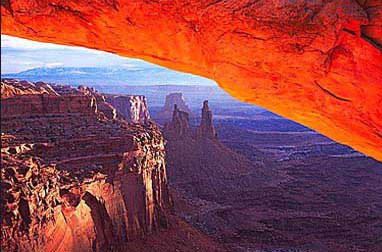Grand Canyon reveals mystery: older than thought
(Agencies)
Updated: 2008-03-07 10:56
Updated: 2008-03-07 10:56
Geologists have been struggling to assign an age to the Grand Canyon, but now they find it's in the water.
The Grand Canyon, carved out over the eons by rushing river water, began to form 17 million years ago, making it nearly three times older than previously thought, scientists said Thursday in the journal Science.
|
|
The general consensus among geologists was that the famed natural landmark in Arizona was about 6 million years old.
But now scientists from University of New Mexico said it is far older based on their findings using a technique called uranium-lead isotope to date mineral deposits in caves from nine sites in the canyon's walls.
The cave formations provided a record of a dropping water table as the canyon deepened.
The gorge is 277 miles (433.3km) long, 1.1 miles deep at its deepest point and up to 18 miles wide. The Colorado River that runs through it arises in the Rocky Mountains of Colorado and flows southwest about 1,400 miles to the Gulf of California.
The scientists found that there is a kind of dual history to the canyon, with the western portion starting to form about 17 million years ago when water from a predecessor to the Colorado River began the slow, inexorable process of eroding the rock, they said.
The eastern portion began forming closer to the 6 million-year-old date that had been the estimate for the whole canyon, they said.
"Essentially, it formed in two parts," said Carol Hill, a University of New Mexico geologist. "The older Grand Canyon formed and then hooked up once the Colorado River became through-flowing (all the way to the Gulf of California), then it hooked up with the eastern Grand Canyon."
Untold tons of rocks were eroded away by the river.
"One of the problems with trying to determine the age of the canyon is that the canyon-forming process itself removes all the material that would otherwise hint to its history and how old it is," University of New Mexico geologist Victor Polyak added.
Even with the latest findings, the canyon remains a relatively recent geological formation, considering the 4.5 billion-year history of the planet. For example, the Rocky Mountains began to rise about 70 million years ago.
|
|
|
||
|
||
|
|
|
|
